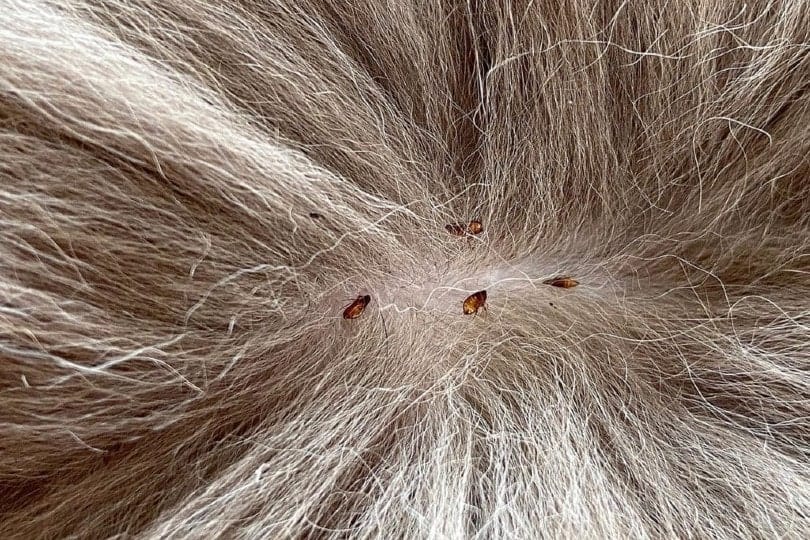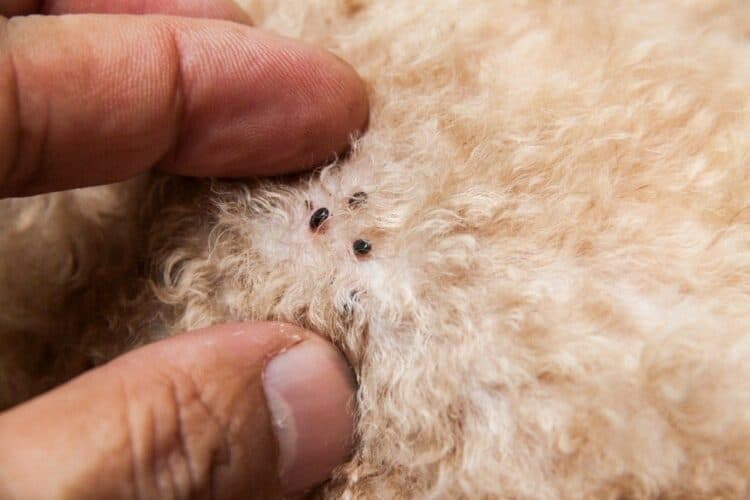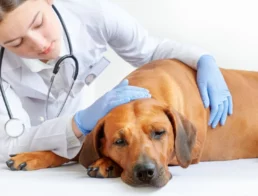Dealing with fleas can be a frustrating nightmare for both you and your dog. These parasites can cause your dog a great deal of discomfort and potentially create health issues for them. Once you know that your dog has fleas, treating the issue immediately will be helpful for both of you. The problem is that fleas are so small. If your dog has fleas, how will you know?
Luckily, there are a few telltale signs that your dog has fleas. Constant, excessive itching is the first and primary symptom. If your dog is scratching more than usual and seems uncomfortable while they’re doing it, fleas may be the cause.
There are other symptoms to look out for to know if your dog has fleas. In this article, we look at the signs of an infestation, how to treat it, and what you can do to prevent it from happening again.
Common Symptoms of Fleas
Incessant scratching is usually the first sign that indicates a flea infestation on your dog. Fleas bite their host in order to consume the blood. They depend on this for survival. The bites can irritate a dog’s skin and make it itch, causing them extreme discomfort. Other signs to watch for are:
- Red pimples or bumps on the skin’s surface
- Areas of hair loss
- Dry, irritated skin patches
- Scabs
If you see these signs, check your dog for fleas. Separate the hair on your dog’s back, neck, or head until you can see down to the skin. If you see any fleas running, this is an obvious sign that your dog has fleas. However, you may just see flea dirt. These are little specks of black that look like pepper. Flea dirt is excrement that fleas leave behind after consuming your dog’s blood, hence the black coloring.
You can tell the difference between flea dirt and regular dirt by placing the specks on a paper towel. Sprinkle them with water. If the specks turn reddish-brown and smear into the paper towel, they are flea dirt.
If you’re still not sure if your dog has fleas, use a flea comb. This is a fine-toothed comb that will pull fleas and flea eggs from your dog’s hair. Comb your dog a few times, and see what is removed by the comb teeth. If you see any fleas on the comb, submerge it in a bowl of soapy water to clean the fleas off of it and ensure that they don’t live.

My Dog Has Fleas! Now What?
Bathing your dog using a medicated shampoo for flea removal is a quick way to get them much-needed relief. Once you lather your dog with the shampoo, let it sit on their coat for 5 minutes or as instructed by the label to thoroughly kill fleas and flea eggs.
You may want to speak to your vet about flea prevention. Applying a topical flea treatment can get rid of an infestation in a short time, sometimes as quickly as 45 minutes. Going forward, a monthly topical treatment will prevent an infestation from recurring.
Once the fleas are removed from your dog, it doesn’t mean they are removed from your home. If your dog encounters any fleas around the house, the infestation can start again. Ridding your home of fleas is crucial for your dog but also for you and your family. Fleas don’t care what their host is, as long as they have one. They will also bite people and can infest your furniture, beds, carpeting, and curtains.
After your dog is bathed with a flea shampoo, thoroughly vacuum your home’s surfaces. Get under furniture, under cushions, and any dark corners. Wash your bedding, linens, furniture covers, curtains, and blankets.
Mop your floors. If you have a steam mop, this is even better at killing fleas. If you have other pets in the home, check them for fleas and make sure they are treated if they have them.
It will take a bit of effort, but you can stop a flea infestation and keep it from coming back.
Conclusion
Fleas are frustrating, but once you know that your dog has them, it’s time to act fast to get rid of them. Common signs that your dog has fleas include scratching, red and irritated skin, red bumps on the skin, and bald patches in the coat.
Once you treat your dog for fleas, be sure to also treat your house to avoid a re-infestation. Speak to your vet about flea treatment options to keep your dog flea free.
Featured Image Credit: Shutterstock














